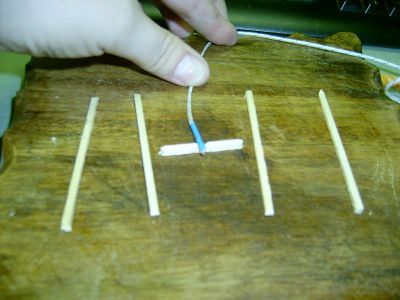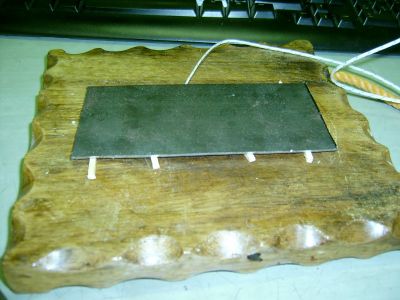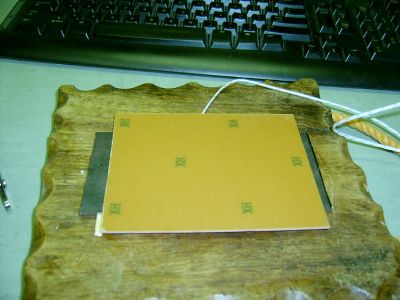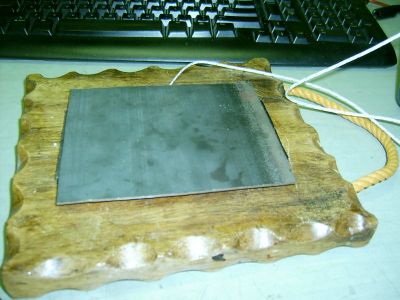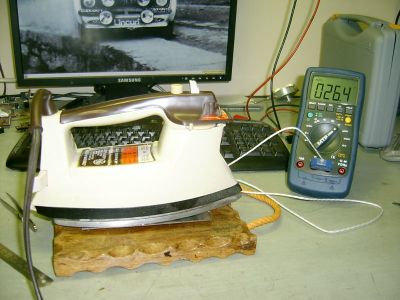Making Printed Circuit Boards Using the Toner Transfer Method
Introduction
This isn't so much a complete how-to guide, it's just the process I use to make PCBs (ie. documentation for when I forget). There are plenty of great guides on how to do this so I won't beat a dead horse by going over every detail.
Motivation
The most annoying part of the toner transfer method is the fact that you can't always be certain you'll get good results. Especially on larger boards, you'll end up applying too much heat/pressure to one section of the board and not enough to another side. Luck plays a large factor when it comes the quality of the resulting board. This is unacceptable when making boards with 10 mil traces spaced 30 mil apart, any small defect becomes a big pain to fix.
Method
I start by placing some matchsticks on a cutting board to act as spacers for a thermocouple.
A heavy-gauge piece of sheet metal is then placed over the spacers and the thermocouple. The thermocouple must make contact with the metal.
The transfer sheet is then placed on top of the metal plate facing upwards. I happen to really like using glossy magazine paper (not pictured) but you can use whatever works best for you.
The copper clad board is then carefully placed over the transfer sheet so it lines up properly.
Then another large piece of heavy-gauge sheet metal is placed over the copper clad board. This helps spread the heat from the iron more evenly, otherwise you'll end up with cold spots where the holes on the bottom of the iron meet the board. Alternatively you could move the iron around but this also results in uneven heating.
Here's a picture of the final setup. The iron is centered on the top piece of sheet metal and a digital thermometer reads the temperature of the bottom plate.
Heating cycle
This requires some experimentation to get right, but once you "calibrate" your setup you should be able to easily make quality boards without any guesswork (the final temperature depends on the gauge of the sheet metal and the type of toner you're using). I first tried heating to about 80C but that was barely enough, so I moved onto 100C and finally 110C where I started getting good results. No pressure is applied, the weight of the iron and the sheet metal are sufficient to press everything together.
The procedure is very simple, I plug in the iron, wait for the thermometer to hit 110C, then remove the iron and the top piece of sheet metal (no need to rush). After giving the copper clad a minute to cool off I throw it in some lukewarm water and wait until I can easily peel off the paper.
Observations/Tips
- Excess heat causes the toner to "boil", you'll end up with bubbly-looking traces which are useless.
- Excess pressure causes the traces to "fan out" (ie. become fatter). This isn't always a problem, it depends on the distance between your traces.
- A clean copper clad board is a must! A bit of steel wool and some lacquer thinner does a great job.
- Throwing a hot board in cold water yields worse results than if you wait a minute or two for the board to cool down before dunking it.
- Small breaks in traces can easily be repaired with a thin sharpie permanent marker.
